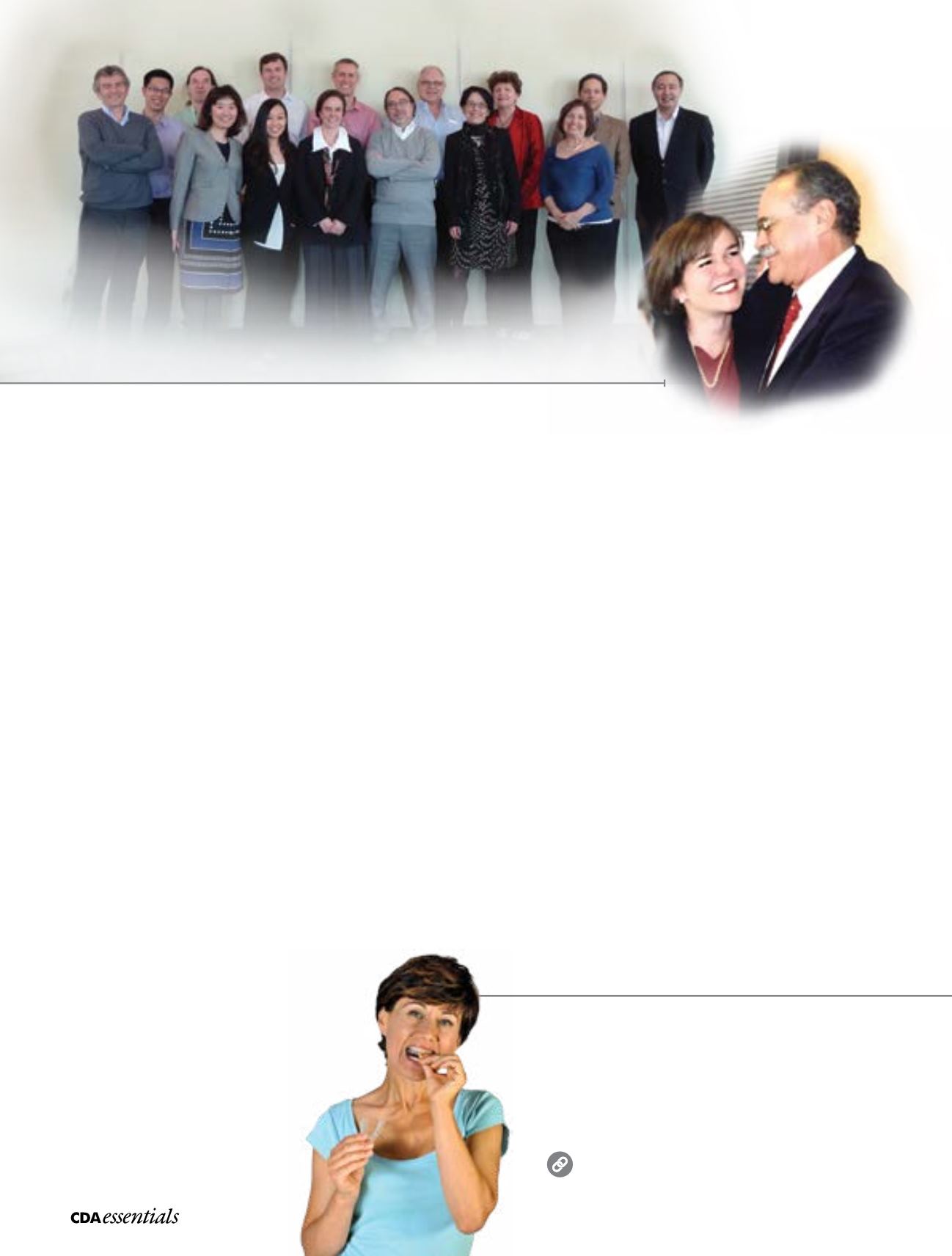
36
|
Volume2 Issue3
I
ssues and
P
eople
Dr. Almeidawas indental schoolwhenher father
encouragedher topursuedental sleepmedicine; itwas the
start of a lifelong interest in the treatment of sleep-related
breathingdisorders. “He sawadentist givea talkabout
treatment for sleepapneaand toldme, ‘Youneed todo
thisbecausemypatientsneedhelp.’” She isnowa leader
inher field—a renowned researcher; assistant professor
in theUniversityof BritishColumbia (UBC) department
of oral health sciences; andamember of theUBCSleep
Team, amultidisciplinarygroupdedicated to researching
respiratory sleepdisorders. Shealsopractises at her dental
sleepmedicineclinic inVancouver and isoneof 16Canadian
dentistswithDiplomate statusgrantedby theAmerican
BoardofDental SleepMedicine.
An alternative to the
gold standard treatment
Obstructive sleepapnea is adisorder thatmayaffect
over 1 in4Canadianadults, but is self-reportedbyonly
3%of Canadians.
1
Thegold standard forOSA treatment
is continuouspositiveairwaypressure (CPAP), but the
treatment doesnotwork for everyone. Dr. Almeidaexplains,
“CPAP is themost effective treatment, short term. But
compliance is an issue.We know thatmanypatients find the
maskor the treatment, ingeneral, uncomfortable.
Theymight take themaskoff in themiddle
of thenight or theyonlyuse it a few times
aweek. Goodadherence toCPAP isoften
describedas 5days/week, 70%of the
night, and following this criteriaabout
40–60%of thepatientsusingCPAPare
thought toexhibit goodadherence.”
For patientswhoareunable
to tolerateCPAPor use it
inconsistently, analternative
treatment forOSA is anoral appliance—dental orthotics,
tongue retainingdevices,mandibular advancement
appliances (MAA) ormandibular advancement devices
(MAD). According to theCanadianThoracicSocietyand the
AmericanAcademyof SleepMedicine, oral appliances are
recommendedas thefirst treatment for patientswho snore
(without apnea) orwhohavemild tomoderateOSA. Oral
appliances arealsoanoption for patientswith severeOSA
whofind it difficult to stickwithCPAP therapy.
“Whenwecompare themain treatment for sleepapnea,
which is theCPAP, toanoral appliance, theCPAP ismore
effective in the reductionof theapneasover the short term,”
explainsDr. Almeida. “But new studieson severecasesof
OSAare showing that the long-termeffectivenessof CPAP
andanoral appliance is about the samebecausepatients are
more likely touse theoral appliance throughout thenight.”
2, 3
Althoughoral appliancesdon’twork for all patients, Dr.
Almeida says that roughly two-thirdsof patientsbenefit
therapeutically from them.
4
Inher experience, shefinds
medical professionals are “still very skeptical about oral
appliances for treatingOSA, in regards to treatment
outcomes. It’s anareawhere there is still a lackof extensive
evidenceon the treatment’s long-termeffectiveness,which
considersbothefficacyandadherence to treatment.”
Formore informationon thedentist’s role in themanagement
of snoringandOSA, refer to theCollegeofDentalSurgeonsof
BritishColumbiadocument, “ObstructiveSleepApnea,TheRole
ofDentists in theTreatmentofSnoringandObstructiveSleep
ApneawithOralAppliances.”
6
Dr. Almeidacreditsher father's
influenceonher careerpath.
The inauguralORANGE (OralApplianceNetworkonGlobal
Effectiveness) networkmeeting in2012.


